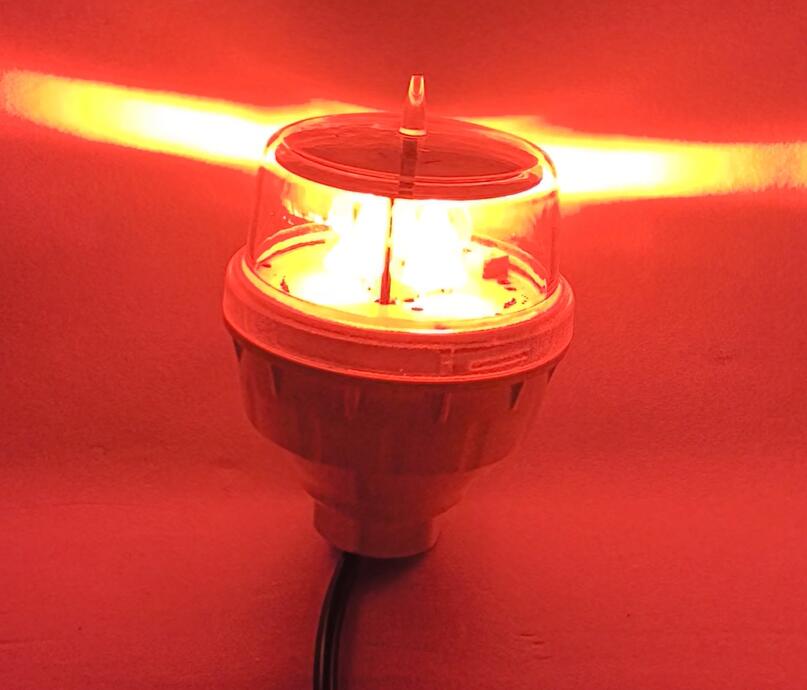FAA L 810 Obstruction Light: Essential Safety Solutions for Aviation
The FAA L 810 obstruction light is a critical component in aviation safety, designed to mark tall structures that could pose hazards to low-flying aircraft. These lights ensure visibility during both day and night, reducing the risk of collisions. Compliant with Federal Aviation Administration (FAA) standards, the L 810 light is widely used on communication towers, wind turbines, and other high-rise structures. This article explores its features, applications, and importance in modern aviation safety.
Key Features of the FAA L 810 Obstruction Light
The FAA L 810 obstruction light stands out due to its durability, efficiency, and compliance with strict regulatory requirements. Some of its notable features include:
High-Intensity LED Technology – Modern L 810 lights use energy-efficient LEDs, offering long-lasting performance and reduced maintenance costs.
Dual-Day/Night Operation – These lights automatically adjust brightness based on ambient light conditions, ensuring optimal visibility.
Weather Resistance – Built to withstand harsh environments, the FAA L 810 is resistant to rain, wind, and extreme temperatures.
Low Power Consumption – LED technology minimizes energy usage while maintaining high visibility.
Easy Installation & Maintenance – Designed for quick deployment, these lights are ideal for both new installations and retrofits.
Applications of the FAA L 810 Obstruction Light
The FAA L 810 obstruction light is essential for various industries where tall structures could interfere with aviation routes. Common applications include:
1. Communication Towers
Telecommunication towers are often located in remote or elevated areas, making them potential hazards for aircraft. The L 810 light ensures these structures remain visible to pilots, preventing accidents.
2. Wind Turbines
As wind energy expands, turbines are increasingly installed in open landscapes. The FAA L 810 helps mark these tall structures, especially in low-visibility conditions.

3. Skyscrapers & High-Rise Buildings
Urban developments require proper lighting to comply with aviation safety regulations. The L 810 obstruction light is often used on rooftops and tall buildings to enhance visibility.
4. Power Transmission Lines & Utility Poles
High-voltage power lines and utility poles in flight paths must be clearly marked to avoid collisions. The FAA L 810 provides reliable illumination for these critical infrastructures.
| faa l 810 obstruction light |
Regulatory Compliance & Standards
The FAA L 810 obstruction light meets stringent FAA and International Civil Aviation Organization (ICAO) requirements. Key standards include:
FAA AC 70/7460-1L – Specifies lighting requirements for obstructions affecting navigable airspace.
ICAO Annex 14 – Provides international guidelines for aerodrome and obstruction lighting.
ICAO Medium Intensity Type B – The L 810 complies with this standard, ensuring global recognition.
These regulations ensure that the FAA L 810 provides consistent and reliable performance in all conditions.
| faa l 810 obstruction lights |
Advantages Over Traditional Lighting Solutions
Compared to older incandescent or halogen obstruction lights, the FAA L 810 offers several benefits:
Longer Lifespan – LEDs last significantly longer than traditional bulbs, reducing replacement frequency.
Energy Efficiency – Lower power consumption leads to cost savings over time.
Enhanced Reliability – Solid-state LED technology is less prone to failure, ensuring continuous operation.
Reduced Maintenance – Fewer replacements mean lower labor and downtime costs.
Installation & Maintenance Best Practices
To maximize the effectiveness of the FAA L 810 obstruction light, proper installation and maintenance are crucial:
Correct Placement – Lights should be positioned at the highest point of the structure and at intermediate levels if required by regulations.
Regular Inspections – Routine checks ensure the lights are functioning correctly and remain free from obstructions like dirt or snow.
Power Supply Redundancy – Backup power systems (e.g., solar or battery) can prevent outages during electrical failures.
Future Trends in Obstruction Lighting
As aviation and infrastructure continue to evolve, obstruction lighting technology is also advancing. Future developments may include:
Smart Lighting Systems – Integration with IoT for remote monitoring and automatic fault detection.
Solar-Powered Solutions – Increased use of renewable energy to power obstruction lights in off-grid locations.
Enhanced Visibility Features – Improved optics and flashing patterns for better pilot recognition.
The FAA L 810 obstruction light plays a vital role in aviation safety, ensuring that tall structures are visible to pilots in all conditions. With its energy-efficient LED technology, regulatory compliance, and robust design, it remains a top choice for marking communication towers, wind turbines, and other high-rise installations. As technology advances, the L 810 will continue to adapt, further enhancing airspace safety worldwide.
